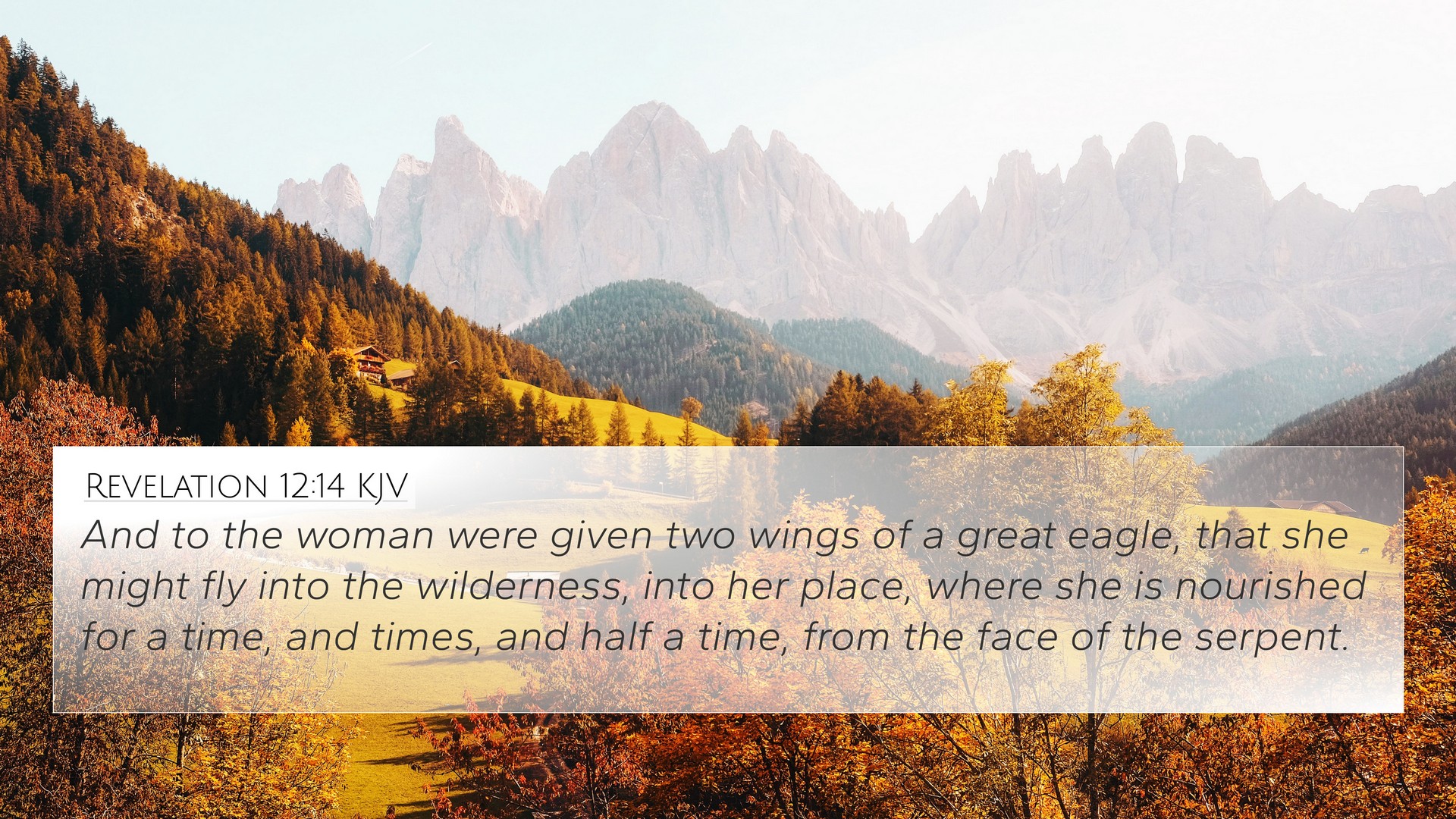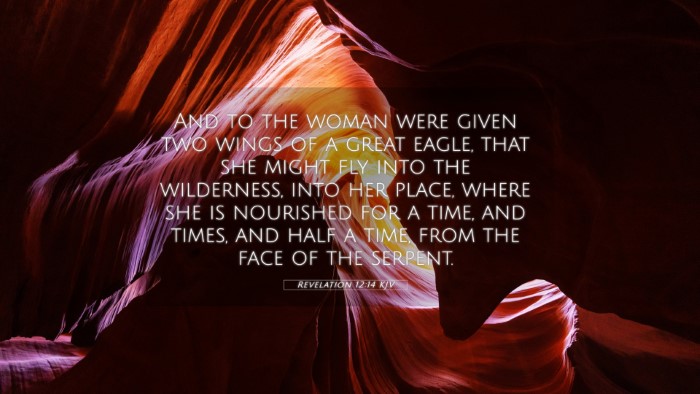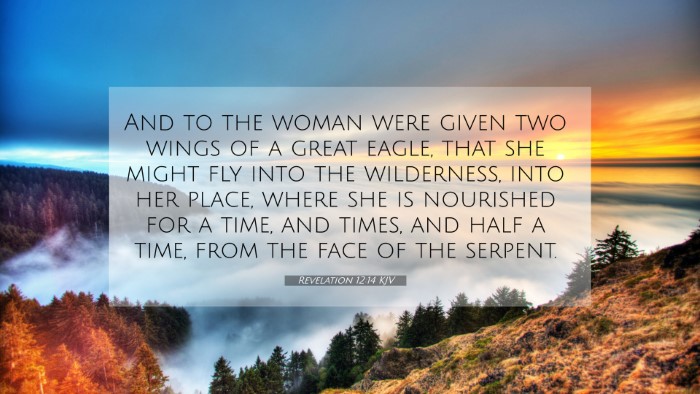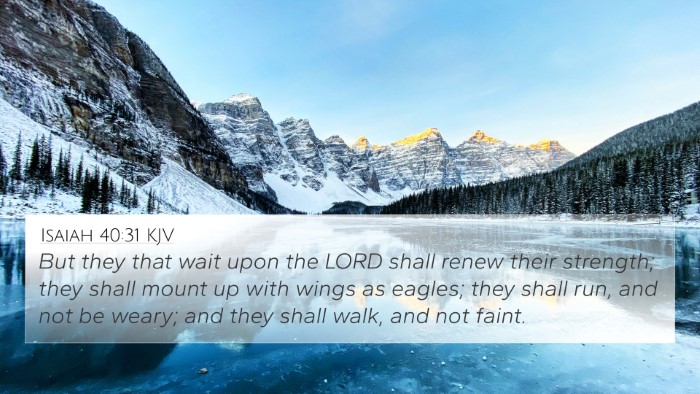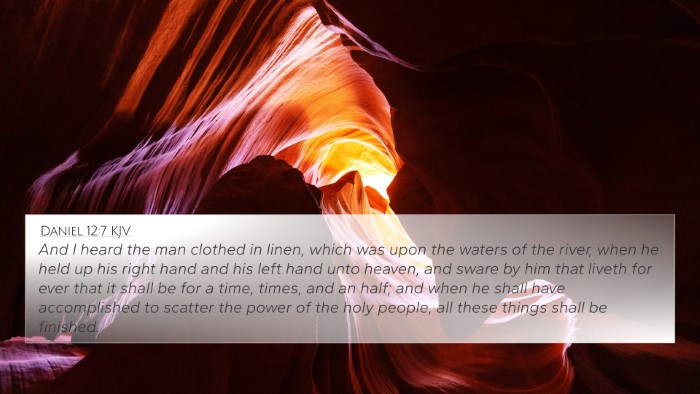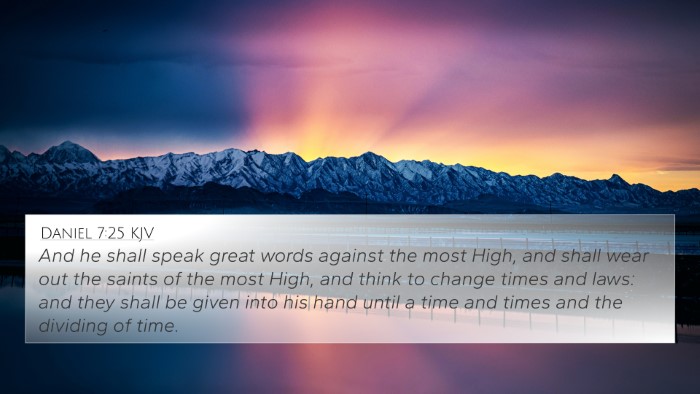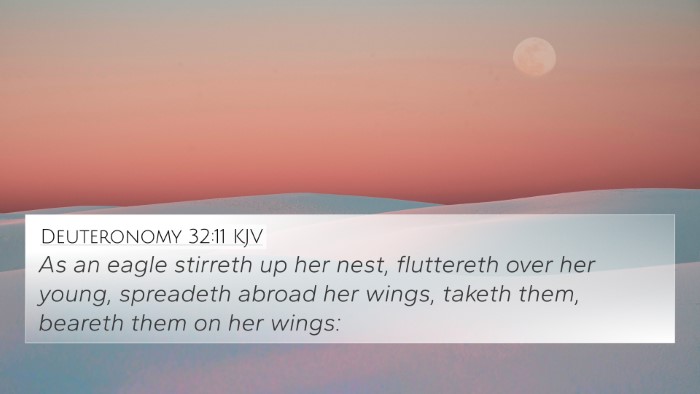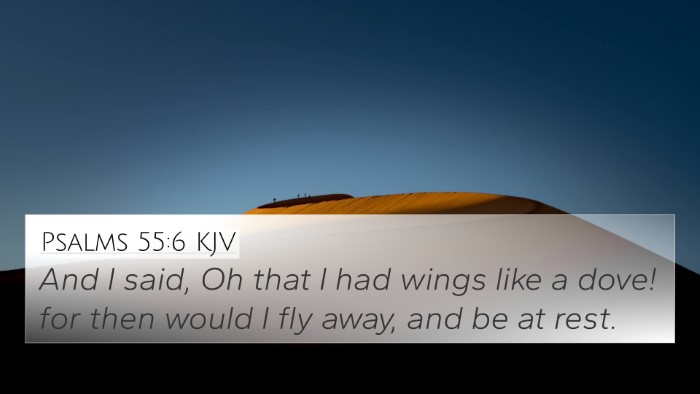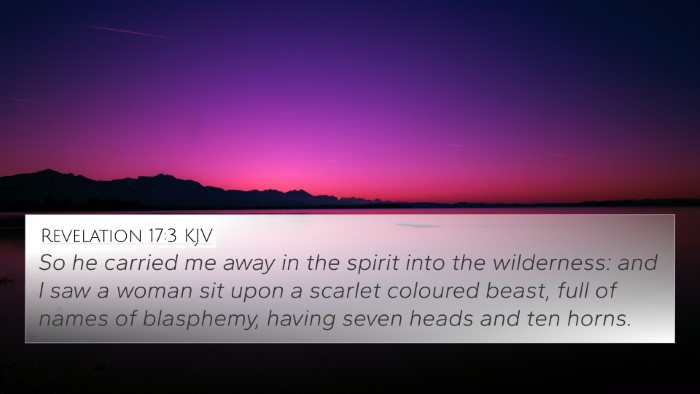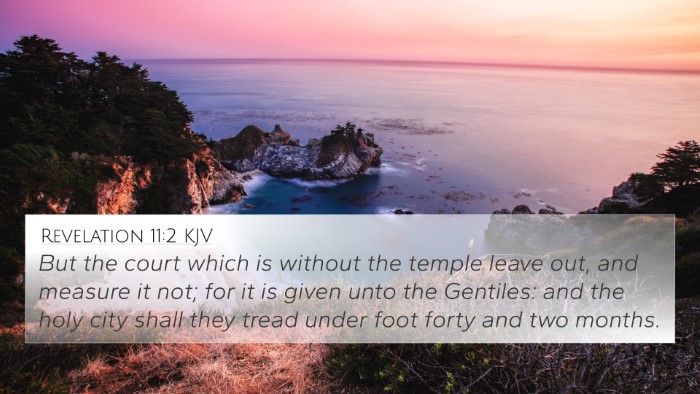Understanding Revelation 12:14
Verse: "And to the woman were given two wings of a great eagle, that she might fly into the wilderness, into her place, where she is nourished for a time, and times, and half a time, from the face of the serpent." – Revelation 12:14
Summary of Interpretation
This verse from the Book of Revelation gives a vivid picture of divine protection and sustenance during times of tribulation. The imagery of the woman receiving wings likens her to the Israelites being freed from Egypt or the protection of God over His people in times of distress. Various commentaries shed light on the symbolic meanings present in this verse.
Insights from Public Domain Commentaries
Matthew Henry’s Commentary
Matthew Henry relates the wings of the eagle to God's provision and care. He emphasizes the significance of the wilderness as a place of spiritual formation and separation from worldly influences. The 'time, and times, and half a time' suggests a defined period during which God's faithful are to be sheltered from evil, echoing themes found in both Daniel and the prophetic literature.
Albert Barnes’ Notes on the Bible
Albert Barnes interprets the 'woman' as representing the church, particularly during persecution. The wings of a great eagle symbolize swift deliverance brought by divine intervention. His commentary aligns the wilderness with periods of hardship that often precede divine favor and protection, paralleling the experiences of the ancient Israelite nation in the desert.
Adam Clarke’s Commentary
Adam Clarke discusses the metaphorical nature of this passage, where the wilderness represents a place of refuge. He highlights the 'two wings' as a symbol of completeness and rapidity in God's deliverance. Clarke also connects this passage with the prophetic statements regarding the time frame, which emphasizes God's sovereignty over history and events.
Cross-References to Revelation 12:14
- Exodus 19:4: "You have seen what I did to the Egyptians, and how I bore you on eagles' wings and brought you to myself." – Here, God's deliverance is likened to eagles' wings.
- Daniel 7:25: "And he shall speak great words against the most High, and shall wear out the saints of the most High, and think to change times and laws." – This connects with the theme of persecution during the defined time periods.
- Matthew 24:16: "Then let those who are in Judea flee to the mountains." – Emphasizing the need for escape and refuge when under duress.
- Psalm 91:4: "He will cover you with his feathers, and under his wings you will find refuge." – Another metaphor of divine protection.
- Revelation 12:6: "And the woman fled into the wilderness, where she has a place prepared by God." – Directly ties to the continuity of this theme in Revelation.
- Isaiah 40:31: "But those who wait for the Lord shall renew their strength; they shall mount up with wings like eagles." – A promise of divine strength and elevation during troubles.
- Revelation 13:5: "And the beast was given a mouth uttering haughty and blasphemous words, and it was allowed to exercise authority for forty-two months." – Echoes the 'time, and times, and half a time' theme of tribulation.
Importance of Cross-Referencing Biblical Texts
Cross-referencing is a vital tool for deepening our understanding of scripture. By examining various verses that relate both contextually and thematically, we uncover a richer meaning within the biblical narrative. Here are a few methods and benefits of engaging in cross-referencing:
- Comprehending Thematic Connections: By linking Bible scriptures such as Revelation 12:14 with Old Testament prophecies, one can recognize the continuity of God’s plan through different ages.
- Enriching Bible Study: Using tools such as a Bible concordance allows readers to uncover links that may not be immediately evident, enhancing their overall biblical knowledge.
- Developing a Holistic View: Cross-referencing different parts of the Bible aids in understanding themes like deliverance, providence, and protection across both Testaments.
- Support for Teaching and Sermon Preparation: Incorporating cross-references effectively provides a solid foundation for theological arguments and supports lessons on faith.
Developing a Structural Approach to Bible Cross-Referencing
Engaging with the scriptures in a structured manner can lead to profound insights. Here are some ways to approach Bible cross-referencing:
- Identifying Connections: Recognize and explore verses similar in theme or narrative function, like looking for connections between the Gospels and the prophetic books.
- Utilizing Reference Resources: Bible reference tools like interlinear Bibles or cross-reference Bible studies can illuminate often overlooked connections.
- Comparative Analysis: Analyzing parallels, such as the similarities between Revelation and Old Testament prophetic books, can deepen your understanding of biblical prophecy.
- Documenting Insights: Keeping a journal of scripture connections and reflections can be helpful for preaching or personal growth.
The Final Thought on Revelation 12:14
The passage from Revelation 12:14 is rich with imagery and meaning, serving as a profound reminder of God's protective hand over His people in turbulent times. By studying related scriptures and engaging in thematic cross-referencing, believers can derive strength and encouragement as they navigate their faith journey. Embracing the connections across biblical texts not only enhances understanding but also fosters a greater appreciation for the coherence of God’s message throughout the Bible.
